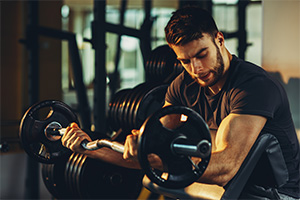Speaking of fitness, we leave no stone unturned to achieve our goals. From putting in the hard work in terms of exercise to choosing fad diets, don’t you do it all in the name of fitness? However, a crucial factor that’s often overlooked in this equation is sleep. While most of us reckon quality sleep as a luxury, it is more of a necessity as your body needs rest to repair and restore completely. Did you know that when you are asleep, the body releases growth hormones and testosterone that speed up muscle recovery? In addition to that, from regulating hormones in the body to improving physical performance and reaction time, adequate sleep is a must.
Scientific studies and research have repeatedly demonstrated the impact of sleep on fitness, performance, and recovery. Let’s delve deep and explore more about sleep and its benefits in maximizing post-workout gains.
The Link Between Sleep Quality and Fitness Performance
The connection between sleep and physical performance has been highlighted for ages. Numerous studies have been concluded supporting the statement. One such study published in the journal ‘Sleep’ found that athletes who extended their sleep duration experienced remarkable improvements in their sprint times. Their shooting accuracy improved along with their moods and reaction times.
Studies also reveal that adequate sleep enhances muscle recovery and growth. The surge in growth hormones and testosterone targets and restores the worn-out muscle tissues and also creates new ones.

Surprisingly, those compromising on sleep quality are also prone to more injuries. Wondering how that’s connected? Well, sleeping boosts cognitive function in individuals and also enhances their energy levels. This is very important to get through those intense gymming sessions actively. Also, sleep impacts the coordination of your body and mind, thus preventing common injuries during a workout.
The association between sleep and recovery after a workout is pretty interesting. Here’s how – inadequate sleep disrupts the hormonal balance in the body. It aggravates the production of cortisol, a stress hormone, that impedes the muscle recovery process post-workout and increases muscle breakdown.
Now that you understand why sleep is a need of the hour, let’s discuss a few ways to improve sleep quality.
How to Improve Sleep Quality for a Healthy Body and Happy Mind?
Improving sleep quality is not rocket science. Simple measures like creating sleep schedules, including physical workouts and keeping worries at bay can help you indulge in a good night’s sleep. However, let’s break through the surface and read more.
Reducing Distractions Before Bed – Can it Help With Your Sleep Quality?
A big yes! Creating the right pre-sleep routine is essential for good and non-interrupted sleep. One way of doing that is by minimizing all forms of distractions before bed. Social media and entertainment on the go are the craze today. Unfortunately, it’s too easy to fall into the trap of late-night scrolling and binge-watching shows. These activities stimulate the brain and disrupt the body’s natural sleep-wake cycle, making it harder to fall asleep and stay asleep.
To improve sleep quality, consider practicing digital detox for at least one hour before your bedtime. This means turning off your electronic devices like your phones, tablets, and televisions. Instead, enjoy indulging in calming activities like taking a warm bath, deep breathing exercises, meditation, or reading a book. It signals the body that it is time to wind down and switch to a resting or sleeping phase.

Take the Effort and Create a Relaxing Sleep Environment
Cutting down pre-sleep distractions is primary. What’s important is creating a relaxing environment to doze off in peace. Ensure that your mattress and pillows are comfortable. There’s no harm in investing big money in high-quality bedding. It could miraculously improve your sleep quality.
Dim the lights, cut out the noise, and lower the temperature in your room. Blackout curtains and eye masks are great ways to block the light. This environment encourages comfortable and quality sleep.
What’s the Impact of Sleep on Workout Routines?
Improving your sleep cycle has profound impacts on your workout routines and fitness outcomes. Individuals who prioritize sleep experience higher energy levels, better focus, and improved physical performance. Moreover, adequate sleep aids post-workout recovery, allowing for more frequent and intense workout sessions without burnouts or injuries.
Conclusion:
Muscle recovery or better brain functioning, sleep is at the center of good health. So, the next time you hit the gym, remember sleep is that missing piece of the puzzle in your fitness journey.













 100% Safe & Secure payments:
100% Safe & Secure payments:




